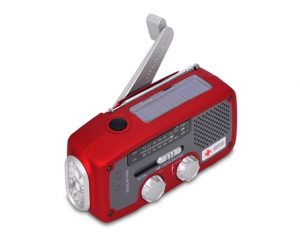World Radio Day marks the anniversary of the first broadcast by UN Radio on 13 February 1946. “Radio in times of emergency and disaster”, the theme of this year’s World Radio Day, offers the opportunity to highlight radio’s unique contribution to help communities respond to and recover from natural disasters, crises and conflicts, or mitigate their impact, as highlighted by this IEC blog.
Radio is the best communication medium in case of disaster or conflict. Receivers are cheap, light, do not necessarily have to rely on a power network, but can run on batteries, small solar PV cells or a manual winding system. Likewise transmitters are not necessarily very large, can even be portable, and run on small generators.
One example was the tsunami in 2004, which washed over parts of Indonesia and killed over 125,000 people, also causing the loss of a number of radio stations and of their staff. Dutch international broadcaster Radio Netherlands Worldwide (RNW) rapidly developed mobile radio studios fitted into shipping containers and sent three such stations to Indonesia to help local broadcasters go back on air.
The RNW engineers also developed smaller mobile radio studio sets, so-called “radio in a box“, for use in countries where radio transmitters have been partially or completely destroyed by a conflict or disaster. The radio station, less than a cubic meter in size, is equipped with an FM transmitter, a mixing console, microphones, headphones, two recorder sets and a laptop computer for editing. A smaller box held a power generator and cables.
Some of these self-contained studios were sent to Padang, the capital of West Sumatra (Indonesia), in September 2009, following another earthquake, and a few months later to Haiti, after the earthquake that killed between 100,000 and 200,000 people.
In another example, during the aftermath of the Haiti earthquake international broadcasters, Internews, a media NGO already active in the country, and foreign governments quickly put together technical means to inform the population. Local information was critical, people needed to know if it was safe to go back to their homes or villages, where they could get medical treatment, water safe to drink or food. To help survivors listen to radio messages the US military flew in 50,000 solar-powered, crank-operated radio sets for distribution to survivors and started relaying VOA broadcasts and public service announcements from a Commando Solo aircraft flying near Haiti.
 Photo courtesy of IEC.
Photo courtesy of IEC.
